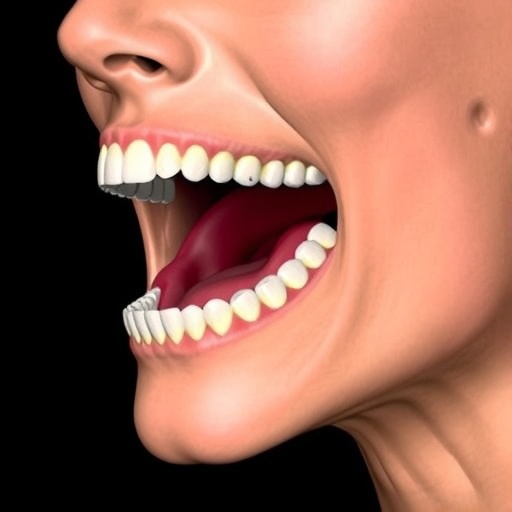In an era where technology and education intersect more dynamically than ever, recent research highlights the potential of artificial intelligence, specifically ChatGPT, in enhancing the learning experience of dental students from diverse linguistic backgrounds. Conducted by A. Rath, the study aims to evaluate the efficacy of using ChatGPT as a supportive tool for learning the complex terminology associated with oral anatomy. As dental education becomes increasingly globalized, the need for tools that can cater to a multilingual student body has never been more crucial.
The backdrop of this research is the growing challenge in dental education where students often come from varied linguistic backgrounds. This diversity, while enriching, can also pose significant barriers when it comes to mastering the terminology specific to oral anatomy. Understanding intricate dental concepts is essential for students as they prepare for their professional careers. Consequently, the integration of AI-driven learning tools could pave the way for more inclusive educational strategies.
Rath’s mixed-methods study incorporated both quantitative and qualitative approaches, allowing for a comprehensive understanding of how ChatGPT can facilitate term acquisition among students. The study recruited a demographic sample of dental students, reflecting a variety of languages and cultural backgrounds. By utilizing ChatGPT for terminology learning, the research aimed to uncover how effectively artificial intelligence could bridge linguistic gaps in understanding complex medical concepts.
One of the primary concerns that Rath’s study sought to address was the cognitive load associated with learning new terminology. When students grapple with unfamiliar terms, it can lead to feelings of frustration and discouragement. Assessing the role of ChatGPT in alleviating this burden, the study posited that AI could provide instant explanations and contextual examples, thereby making the learning process smoother and more intuitive.
Furthermore, the format of the study enriched its findings. By combining surveys, focus group discussions, and performance metrics, Rath was able to gather robust data on the experiences of the participants. Participants reported varying levels of comfort with technology, yet the consensus highlighted a strong inclination towards using AI tools, particularly when those tools were designed to address specific learning challenges.
The findings revealed that students who utilized ChatGPT for their studies experienced enhanced comprehension of oral anatomy terminology. The AI platform allowed them to engage with the content interactively, promoting a sense of agency in their learning. This engagement was particularly significant for students who may have struggled with language barriers. ChatGPT offered them a familiar conversational format that they could leverage to ask questions and seek clarifications in real-time.
Moreover, the results indicated that the use of AI in education has a potential ripple effect. Students reported that their enhanced understanding of terminology had a positive impact on their overall academic performance and confidence in clinical settings. The blended learning approach enabled by ChatGPT allowed them to tackle subjects they previously found daunting, transforming their educational journey and equipping them with critical skills for their future professions.
The implications of Rath’s research extend beyond the immediate findings. As educational institutions contemplate the integration of AI tools into their curricula, this study serves as a crucial piece of evidence supporting the argument that technology can genuinely enhance learning outcomes, especially for diverse student populations. The insights gained from this research may prompt further investigations into how various AI applications can be harnessed to support learners across disciplines.
However, the study also acknowledges potential limitations. For instance, while the results were promising, the efficacy of AI tools can vary significantly depending on the implementation and the user experience. Personalized learning paths that accommodate students’ individual needs and pace are vital for maximizing the benefits of these technologies. Additionally, the reliance on AI does raise questions regarding the ethical considerations surrounding its use in education, particularly concerning data privacy and the role of human educators in the learning process.
In conclusion, Rath’s exploration of using ChatGPT as a terminology learning aid in dental education is a pioneering contribution to the field. As dental programs seek to adapt to the growing diversity of their student bodies, the integration of AI-driven tools may well offer a pathway to a more inclusive and effective educational experience. The research underscores the potential of AI not merely as an auxiliary tool but as a transformative element in the academic journey of future dental professionals.
As we look ahead, the implications of this study encourage further research into the application of artificial intelligence in various educational contexts. Expanding on Rath’s findings could lead to innovative strategies that enhance language acquisition and subject mastery across different fields of study. The potential of AI in education is vast, and as educators experiment with these powerful tools, the learning landscape will undoubtedly evolve, bringing new opportunities for students worldwide.
In summary, Rath’s study makes a compelling case for the intelligent use of AI in dental education, emphasizing how embracing technological advancements can foster deeper understanding and greater inclusion for students from diverse linguistic and cultural backgrounds.
Subject of Research: The role of ChatGPT in supporting terminology learning in oral anatomy among linguistically diverse dental students.
Article Title: Leveraging ChatGPT to support terminology learning in oral anatomy: a mixed-methods study among linguistically diverse dental students.
Article References:
Rath, A. Leveraging ChatGPT to support terminology learning in oral anatomy: a mixed-methods study among linguistically diverse dental students.
BMC Med Educ 25, 1425 (2025). https://doi.org/10.1186/s12909-025-07968-0
Image Credits: AI Generated
DOI: 10.1186/s12909-025-07968-0
Keywords: AI in education, dental education, terminology learning, ChatGPT, linguistic diversity, mixed-methods research, student engagement, oral anatomy, technology integration.




